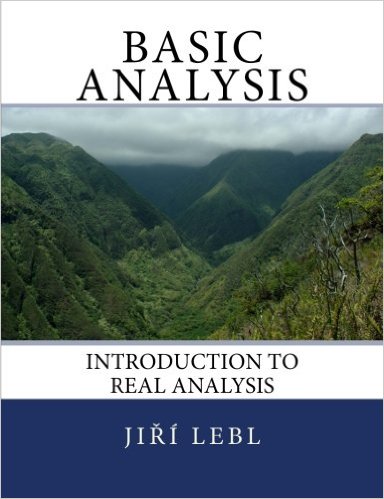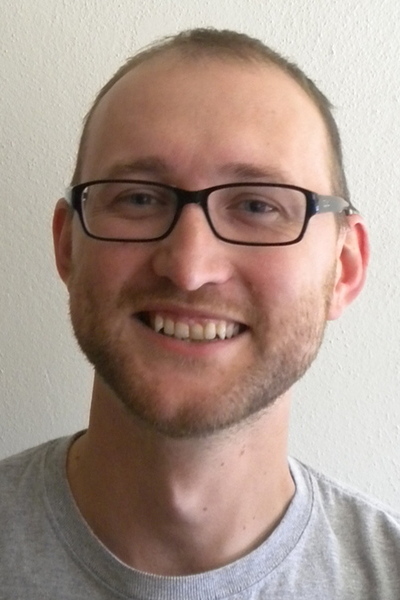
Basic Analysis: Introduction to Real Analysis
A first course in mathematical analysis. Covers the real number system, sequences and series, continuous functions, the derivative, the Riemann integral, sequences of functions, and metric spaces.
Tag(s): Real Analysis
Publication date: 01 Mar 2016
ISBN-10: 1530256747
ISBN-13: 9781530256747
Paperback: 260 pages
Views: 14,377
Type: Textbook
Publisher: Pearson Education
License: Creative Commons Attribution-NonCommercial-ShareAlike 3.0 United States
Post time: 25 Feb 2017 06:00:00
Basic Analysis: Introduction to Real Analysis
 A first course in mathematical analysis. Covers the real number system, sequences and series, continuous functions, the derivative, the Riemann integral, sequences of functions, and metric spaces.
A first course in mathematical analysis. Covers the real number system, sequences and series, continuous functions, the derivative, the Riemann integral, sequences of functions, and metric spaces.
Publication date: 01 Mar 2016
ISBN-10: 1530256747
ISBN-13: 9781530256747
Paperback: 260 pages
Views: 14,377
Document Type: Textbook
Publisher: Pearson Education
License: Creative Commons Attribution-NonCommercial-ShareAlike 3.0 United States
Post time: 25 Feb 2017 06:00:00
Share — copy and redistribute the material in any medium or format
Adapt — remix, transform, and build upon the material
The licensor cannot revoke these freedoms as long as you follow the license terms.
Click here to read the full license.
This free online textbook (e-book in webspeak) is a one semester course in basic analysis. This book started its life as my lecture notes for Math 444 at the University of Illinois at Urbana-Champaign (UIUC) in the fall semester of 2009, and was later enhanced to teach Math 521 atUniversity of Wisconsin-Madison (UW-Madison). A prerequisite for the course is a basic proof course. It should be possible to use the book for both a basic course for students who do not necessarily wish to go to graduate school, but also as a first semester of a more advanced course that also covers topics such as metric spaces.
The standard book used for the class at UIUC is Bartle and Sherbert, Introduction to Real Analysis third edition (BS from now on). The structure of the book up to chapter 6 mostly follows the syllabus of UIUC Math 444. Some topics covered in BS are covered in slightly different order, some topics differ substantially from BS and some topics are not covered at all. For example, we will define the Riemann integral using Darboux sums and not tagged partitions. The Darboux approach is far more appropriate for a course of this level. Chapter 7 (Metric Spaces) was added to teach the more advanced course at UW-Madison. The philosophy is that metric spaces are absorbed much better by the students after they have gotten comfortable with basic analysis techniques in the very concrete setting of the real line.
The aim is to provide a low cost, redistributable, not overly long, high quality textbook that students will actually keep rather than selling back after the semester is over. Even if the students throw it out, they can always look it up on the net again. You are free to have a local bookstore or copy store make and sell copies for your students. See below about the license.
Tweet
About The Author(s)
Jiří Lebl (@rednekulo) is Assistant Professor of Mathematics at Oklahoma State University. His current research interests are complex analysis and CR geometry. He is also interested in the connections to other fields such as computer science, quantum computing, algebraic geometry, and commutative algebra. He has published over 20 peer reviewed scientific papers, mostly focused on complex analysis in several variables. Before jumping fully into mathematics, he was involved in programming and free software, in particular the GNOME desktop project, and wrote several programming tutorials.

Jiří Lebl (@rednekulo) is Assistant Professor of Mathematics at Oklahoma State University. His current research interests are complex analysis and CR geometry. He is also interested in the connections to other fields such as computer science, quantum computing, algebraic geometry, and commutative algebra. He has published over 20 peer reviewed scientific papers, mostly focused on complex analysis in several variables. Before jumping fully into mathematics, he was involved in programming and free software, in particular the GNOME desktop project, and wrote several programming tutorials.